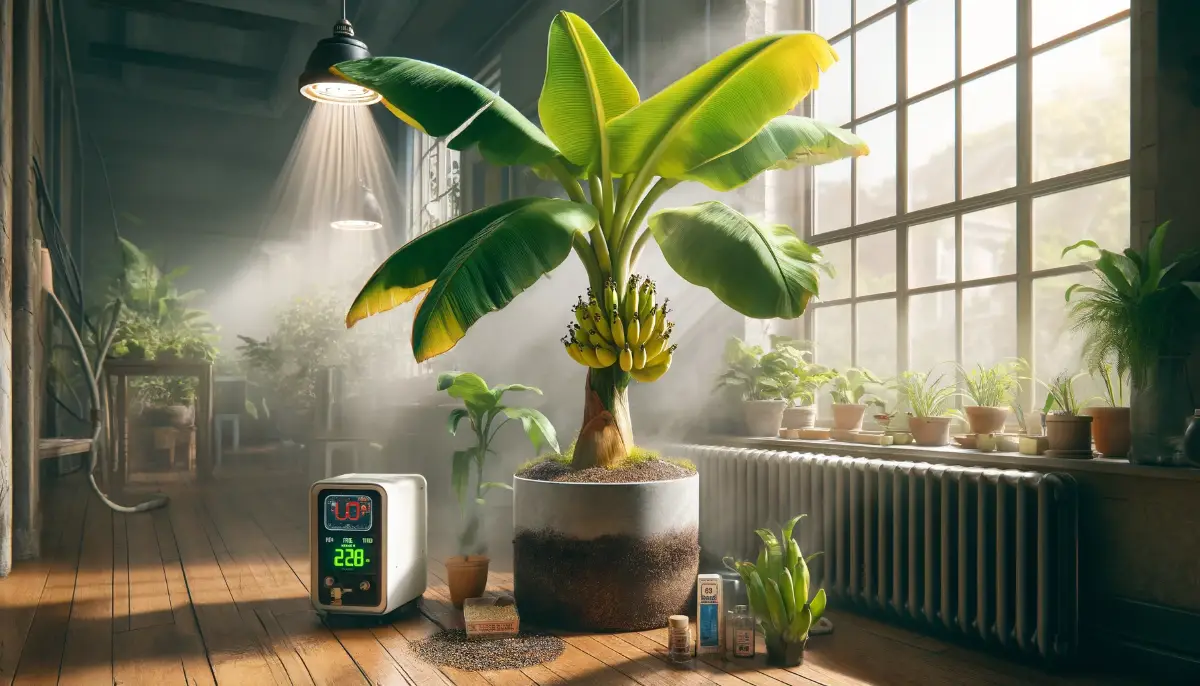Growing lemon trees at home is not only rewarding, it’s a delightful addition to your home that offers both aesthetic appeal and practical benefits.
Whether you’re a seasoned gardener or a beginner looking to start your first project, lemon trees provide a beautiful and bountiful experience.
This article will walk you through everything you need to know to successfully grow, nurture, and enjoy the fruits of a lemon tree right from the comfort of your home.
Selecting the Right Lemon Tree Variety
When embarking on the journey of growing a lemon tree at home, choosing the right variety is crucial for success. Lemon trees come in several types, each with its own climate and care requirements. Here are a few popular varieties that are well-suited for home gardening:
- Meyer Lemon: Known for its sweeter, less acidic fruit, the Meyer lemon is ideal for those in cooler climates. It thrives both indoors and outdoors and is more tolerant of cold weather.
- Eureka Lemon: If you’re looking for a true, tangy lemon, the Eureka might be your best bet. This variety is known for its year-round harvest and performs well in warmer climates.
- Lisbon Lemon: Similar to the Eureka, the Lisbon lemon is highly productive and has a high tolerance for heat and drought, making it perfect for hotter regions.
When selecting your tree, consider your local climate and how much space you have. Trees can grow quite large, but many varieties are also available in dwarf forms, suitable for container gardening.
Essential Supplies and Initial Setup
To ensure your lemon tree gets off to the best start, you’ll need the following supplies:
- Well-draining soil: Citrus trees do not fare well in overly soggy soil. Choose a potting mix designed specifically for citrus or create your own mix with equal parts peat, perlite, and vermiculite.
- A suitable container: If you’re planting indoors or in a small space, a container with adequate drainage holes is essential. A 5-gallon container is a good starting point for young trees.
- Basic gardening tools: A trowel, pruning shears, and a watering can or hose with a water wand attachment will be necessary for planting and ongoing care.
Initial setup involves choosing a location that receives at least 6-8 hours of direct sunlight per day. If outdoor conditions are less than ideal, consider using grow lights for indoor trees. Plant your tree at the same depth it was in its nursery pot to avoid burying the trunk, which can lead to rot.
Optimal Planting Techniques
Properly planting your lemon tree sets the foundation for its future health and productivity. Here are the steps to ensure your lemon tree thrives from the start:
- Prepare the soil: Before planting, amend the soil with compost or aged manure to increase fertility and improve drainage.
- Planting depth and method: Dig a hole twice as wide and just as deep as the root ball. Gently loosen the roots before placing the tree in the hole, ensuring the base of the trunk is level with the soil surface.
- Watering after planting: Thoroughly water the tree immediately after planting to settle the soil and eliminate air pockets.
Sunlight, Watering, and Nutritional Needs
Lemon trees are sun-loving plants that require consistent care to produce fruit. Here’s how to meet their needs:
- Sunlight: Lemon trees need 6 to 8 hours of direct sunlight daily. If you’re growing indoors, position your tree near a south-facing window or supplement with grow lights.
- Watering: Water your lemon tree regularly, allowing the top 2 inches of soil to dry out between waterings. Avoid overwatering, as this can lead to root rot.
- Fertilization: Feed your lemon tree with a balanced, slow-release citrus fertilizer every few months during the growing season. Follow the instructions on the label for the best results.
Seasonal Care for Your Lemon Tree
Proper care throughout the seasons is crucial for the health and productivity of your lemon tree. Here’s what you need to do in each season:
Spring Care
- Fertilization: Begin the season by applying a balanced citrus-specific fertilizer to support the growth spurt typical in spring.
- Watering: Increase watering as the weather warms and as new growth appears, ensuring the soil remains moist but not waterlogged.
- Pruning: Perform any necessary pruning early in the season to shape the tree and remove any dead or diseased wood.
- Pest Inspection: Check for and treat any pest infestations that often emerge with warmer weather.
Summer Care
- Watering: Lemon trees need plenty of water during the hot summer months. Water deeply but infrequently to encourage deep root growth.
- Mulching: Apply a layer of mulch around the base to help retain soil moisture and regulate soil temperature.
- Pest and Disease Control: Continue monitoring for pests and diseases, treating them promptly to prevent spread.
- Sun Protection: If temperatures are extremely high, consider providing some shade during the hottest part of the day to prevent leaf burn.
Autumn Care
- Reduced Watering: As temperatures begin to drop, reduce watering to prevent waterlogging, which can lead to root rot in cooler temperatures.
- Fertilization: Apply a low-nitrogen, high-potassium fertilizer to prepare the tree for winter by encouraging root development rather than leaf growth.
- Harvesting: Depending on your climate and tree variety, you may begin to harvest lemons in autumn. Harvest fruit as it matures to encourage more production.
Winter Care
- Protection from Cold: In areas with mild winters, little protection is needed, but in cooler climates, wrap the trunk with insulating material or use a frost cloth over the tree on particularly cold nights.
- Pruning: If you haven’t pruned in spring, late winter is another good time for major pruning before new growth starts.
- Watering: Water sparingly, only when the soil is dry. Lemon trees are less active in winter and require less water.
By following these seasonal care tips, your lemon tree will be better equipped to handle changing temperatures and conditions throughout the year, ensuring it stays healthy and productive.
Pruning Your Lemon Tree for Health and Productivity
Proper pruning not only helps in maintaining the structure and appearance of your lemon tree but also enhances its fruit production and overall health. Here’s a guide to effectively prune your lemon tree:
When to Prune
- Timing: The best time to prune lemon trees is either in late winter or early spring before new growth begins. This timing helps the tree heal quickly without stressing it during the extremes of summer or winter.
- Frequency: Annual pruning is recommended, but light trimming can be done anytime to remove dead or damaged branches.
Tools You Will Need
- Pruning Shears: For most of the cutting, especially branches less than 1/2 inch in diameter.
- Loppers: For larger branches, typically those 1/2 to 2 inches in diameter.
- Pruning Saw: For the largest branches, more than 2 inches in diameter.
- Gloves: To protect your hands from sharp thorns and rough bark.
Pruning Steps
- Remove Dead or Diseased Wood: Cut back any branches that show signs of disease, damage, or are dead. This helps prevent the spread of disease and encourages healthier new growth.
- Thin Out Dense Areas: Look for branches that are crossing over each other and those that are growing inward toward the center of the tree. Removing these will improve air circulation and sunlight penetration throughout the tree.
- Shape the Tree: Maintain a balanced shape by trimming back overly long branches. Aim to keep the tree’s canopy open and roughly symmetrical.
- Control Tree Size: If necessary, reduce the height and spread of the tree to make harvesting easier and to fit the space you have. Remember, drastic reductions in size should be done over several seasons to avoid shocking the tree.
- Clean Up: After pruning, clean up all cuttings from around the tree to prevent any diseases from spreading.
Post-Pruning Care
- Watering: Give your tree a good watering after pruning to help ease the stress and support recovery.
- Fertilizing: Apply a balanced fertilizer after pruning to replenish nutrients and encourage healthy new growth.
Regular pruning not only keeps your lemon tree manageable and aesthetically pleasing but also invigorates the tree, promoting more robust and healthier growth. With these tips, your lemon tree will continue to flourish and produce delicious lemons.
Protecting Your Tree from Pests and Diseases
Lemon trees, like all citrus, are susceptible to a range of pests and diseases that can hinder their growth and fruit production. Implementing preventive measures and timely treatments can keep your tree healthy and productive. Here’s how to protect your lemon tree:
Common Pests
- Citrus Scale: These pests attach themselves to the branches and suck sap from the tree. Use an oil-based spray to suffocate the scales without harming the tree.
- Spider Mites: These tiny pests can cause the leaves to yellow and drop. Regularly washing the leaves with water or applying a miticide can control their population.
- Aphids: Known for causing deformities in new growth and producing sticky honeydew, aphids can be controlled with neem oil or by encouraging natural predators like ladybugs into your garden.
Common Diseases
- Citrus Greening: This disease is transmitted by insects and can be fatal to trees. Infected trees show yellowing leaves, stunted growth, and misshapen fruits. There is no cure, so prevention is crucial; control insect vectors and remove any diseased trees promptly.
- Root Rot: Overwatering can lead to fungal diseases like root rot. Ensure good drainage in the soil and reduce watering to prevent this condition.
- Sooty Mold: This fungus grows on the honeydew produced by aphids. Controlling aphids and regularly cleaning the leaves can help prevent this unsightly mold.
Preventive Measures
- Regular Inspections: Early detection of pests and diseases is key to successful management. Inspect your lemon tree regularly for any signs of distress.
- Proper Nutrition and Watering: A well-fed and adequately watered tree is more resistant to pests and diseases. Follow a regular feeding schedule and adjust watering based on the season and weather conditions.
- Sanitation: Keep the area around your tree clean. Remove fallen leaves and debris which can harbor pests and diseases.
By following these practices, you can minimize the impact of pests and diseases and ensure your lemon tree remains a healthy and vibrant part of your garden.
FAQs: Lemon Tree Care
How long does it take for a lemon tree to start producing fruit?
Lemon trees typically begin to bear fruit in about 3 to 5 years if grown from a graft, or longer if grown from seed.
Can lemon trees be grown indoors?
Yes, lemon trees can be grown indoors with adequate sunlight or artificial grow lights and proper care.
How often should I water my lemon tree?
Water your lemon tree once or twice a week by soaking the soil thoroughly, then allowing the topsoil to dry out before watering again.
What type of fertilizer is best for lemon trees?
Use a high-nitrogen, citrus-specific fertilizer. Apply according to package instructions, typically every few months during the growing season.
Do lemon trees need full sun?
Yes, lemon trees require at least 6-8 hours of direct sunlight per day to thrive and produce fruit.
When is the best time to prune a lemon tree?
The best time to prune a lemon tree is either in late winter or early spring before new growth begins.
How do I protect my lemon tree from frost?
Protect lemon trees from frost by covering them with frost cloths or moving potted trees indoors during cold weather.
What are common pests that affect lemon trees, and how can I control them?
Common pests include aphids, spider mites, and citrus scale. Control these pests by using organic pesticides, introducing beneficial insects, or applying horticultural oils.
Why are the leaves on my lemon tree turning yellow?
Yellow leaves can be caused by overwatering, nutrient deficiencies, or pest infestations. Check watering levels, soil nutrients, and inspect for pests.
Can I grow a lemon tree in a pot?
Yes, lemon trees can grow well in pots. Choose a large pot with good drainage and use a well-draining potting mix designed for citrus trees.










